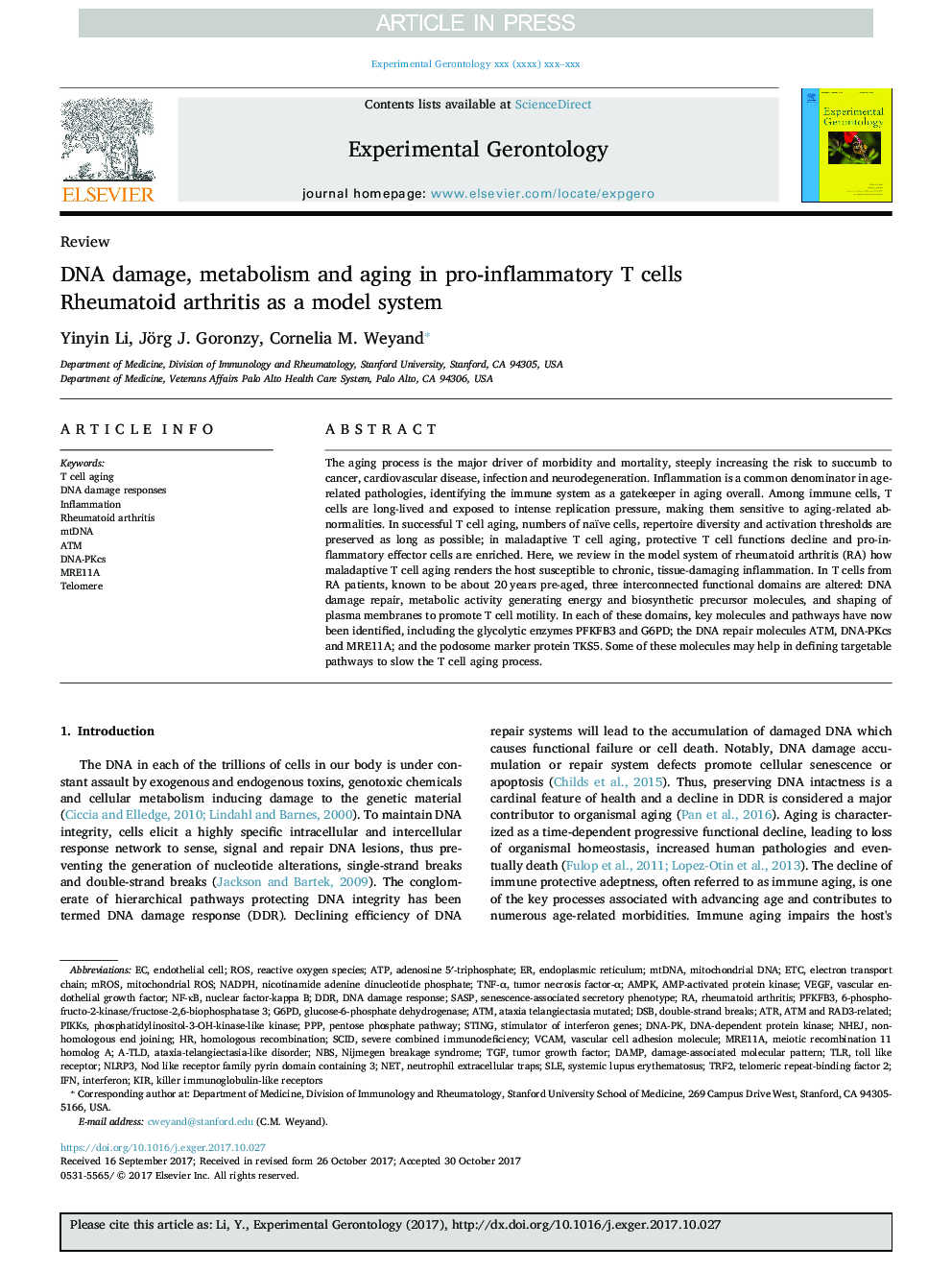| Article ID | Journal | Published Year | Pages | File Type |
|---|---|---|---|---|
| 8262437 | Experimental Gerontology | 2018 | 10 Pages |
Abstract
The aging process is the major driver of morbidity and mortality, steeply increasing the risk to succumb to cancer, cardiovascular disease, infection and neurodegeneration. Inflammation is a common denominator in age-related pathologies, identifying the immune system as a gatekeeper in aging overall. Among immune cells, T cells are long-lived and exposed to intense replication pressure, making them sensitive to aging-related abnormalities. In successful T cell aging, numbers of naïve cells, repertoire diversity and activation thresholds are preserved as long as possible; in maladaptive T cell aging, protective T cell functions decline and pro-inflammatory effector cells are enriched. Here, we review in the model system of rheumatoid arthritis (RA) how maladaptive T cell aging renders the host susceptible to chronic, tissue-damaging inflammation. In T cells from RA patients, known to be about 20Â years pre-aged, three interconnected functional domains are altered: DNA damage repair, metabolic activity generating energy and biosynthetic precursor molecules, and shaping of plasma membranes to promote T cell motility. In each of these domains, key molecules and pathways have now been identified, including the glycolytic enzymes PFKFB3 and G6PD; the DNA repair molecules ATM, DNA-PKcs and MRE11A; and the podosome marker protein TKS5. Some of these molecules may help in defining targetable pathways to slow the T cell aging process.
Keywords
AMPKNHEJDAMPPPPNADPHNBSVCAMNLRP3G6PDTLRTGFDDRKirSASPDNA-PKATRMrOSSCIDATM and Rad3-relatedDNA-PKcsPFKFB3TRF2DSBDNA damage responsesNF-κBAMP-activated protein kinaseataxia telangiectasia mutatedMitochondrial DNAROSmitochondrial ROSadenosine 5′-triphosphateATPRheumatoid arthritisinflammationdamage-associated molecular patterninterferonIFNtoll like receptorneutrophil extracellular trapsTelomeretumor necrosis factor-αNETATMmtDNAelectron transport chainEndothelial cellNijmegen breakage syndromeendoplasmic reticulumdouble-strand breakstumor growth factornon-homologous end joiningVascular endothelial growth factorVascular Endothelial Growth Factor (VEGF)TNF-αNuclear factor-kappa BSenescence-associated secretory phenotypeSystemic lupus erythematosusSLEstimulator of interferon genespentose phosphate pathwayvascular cell adhesion moleculeHomologous recombinationSTINGnicotinamide adenine dinucleotide phosphateETcDNA-dependent protein kinaseDNA damage responsesevere combined immunodeficiencyglucose-6-phosphate dehydrogenaseReactive oxygen specieskiller immunoglobulin-like receptors
Related Topics
Life Sciences
Biochemistry, Genetics and Molecular Biology
Ageing
Authors
Yinyin Li, Jörg J. Goronzy, Cornelia M. Weyand,
